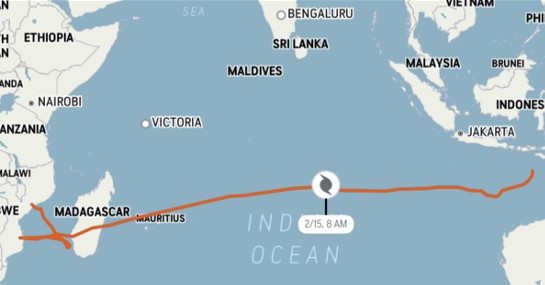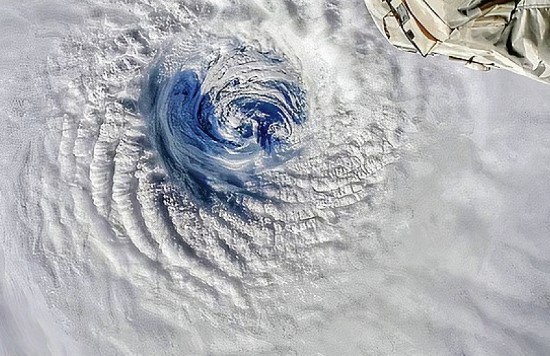Cyclone Freddy is the second tropical storm to last more than a month before dissipating. The first, Hurricane John, lasted for 31 days in 1994. Over Freddy’s lifetime, this storm travelled more than 8,000 kilometres (5,000 miles) from near Australia and across the Indian Ocean to Africa where it made repeated landfalls, heading back out to sea and then coming back ashore. Much of Southern Africa bore the brunt of Freddy which generated more energy in its 37-day lifetime than the named North Atlantic storms that typically occur each year. Freddy made Hurricanes Ian and Nicole that followed paths through the Caribbean Sea to make landfalls in Florida in 2022, both look like popguns.
Freddy did a number of other unusual things as it journeyed across the Indian Ocean. Besides packing more cyclonic energy than any previous hurricane on record, Freddy broke records for repeatedly ebbing and intensifying, terms associated with wind speed increases of 56 kilometres (35 miles) per hour or greater within 24-hour periods. The previous record was four. Freddy did it seven times. Freddy’s direction, flowing from east to west, was also unusual. No tropical storms in the Indian Ocean this century have followed such a path. And finally, near the end, Freddy went loopy, after passing over Madagascar and then making landfall in Mozambique, crossing to Malawi and Zimbabwe, and reversing course to head back out to sea before making second landfalls in both Madagascar and Mozambique (see map below).

A spokesperson for the World Weather Attribution Group stated that Freddy exhibited a pattern seen in several cyclones in the past year. It appeared to follow in particular a path similar to Cyclone Batsirai, a storm that repeatedly punished the island of Madagascar with intense rain and wind.
Have you ever wondered why tropical storms have three different names? It’s a hurricane if it is in the North Atlantic and Northeastern Pacific. In the South Pacific and Indian Ocean it is a cyclone. And in the Northwest Pacific, it is a typhoon. When did this differentiating naming begin? The word hurricane goes back to the 16th century and has its roots in Spanish where the word is “huracán.” The naming coincides with the Spanish voyages to the Americas where sailors first encountered these intense Atlantic storms. The word cyclone comes from the Greek meaning to move in a circle. In the Indian Ocean, it was the British in the 18th century who first used the word to describe the tropical storms experienced there. And last but not least, the word typhoon owes its origins to two possible sources, the Arabic word “tafa,” which means to turn around, or the Chinese word “taifeng,” which means great wind.
Climatologists have been predicting that a warming atmosphere would lead to increased tropical storm intensification whether called hurricane, cyclone or typhoon. That’s because a warmer atmosphere holds more moisture. A warmer ocean feeds the atmosphere causing air masses to rise and be displaced by colder air which then produces winds. These winds then begin to turn in a circular motion because of the Coriolis Effect, going counterclockwise north of the Equator, and clockwise south. The Coriolis Effect happens because the Earth is rotating. But any way you look at it, the winds of the 21st century are increasingly following what climate models have been predicting, yielding far greater storm activity, and cyclones like Freddy can be expected to happen more often.









